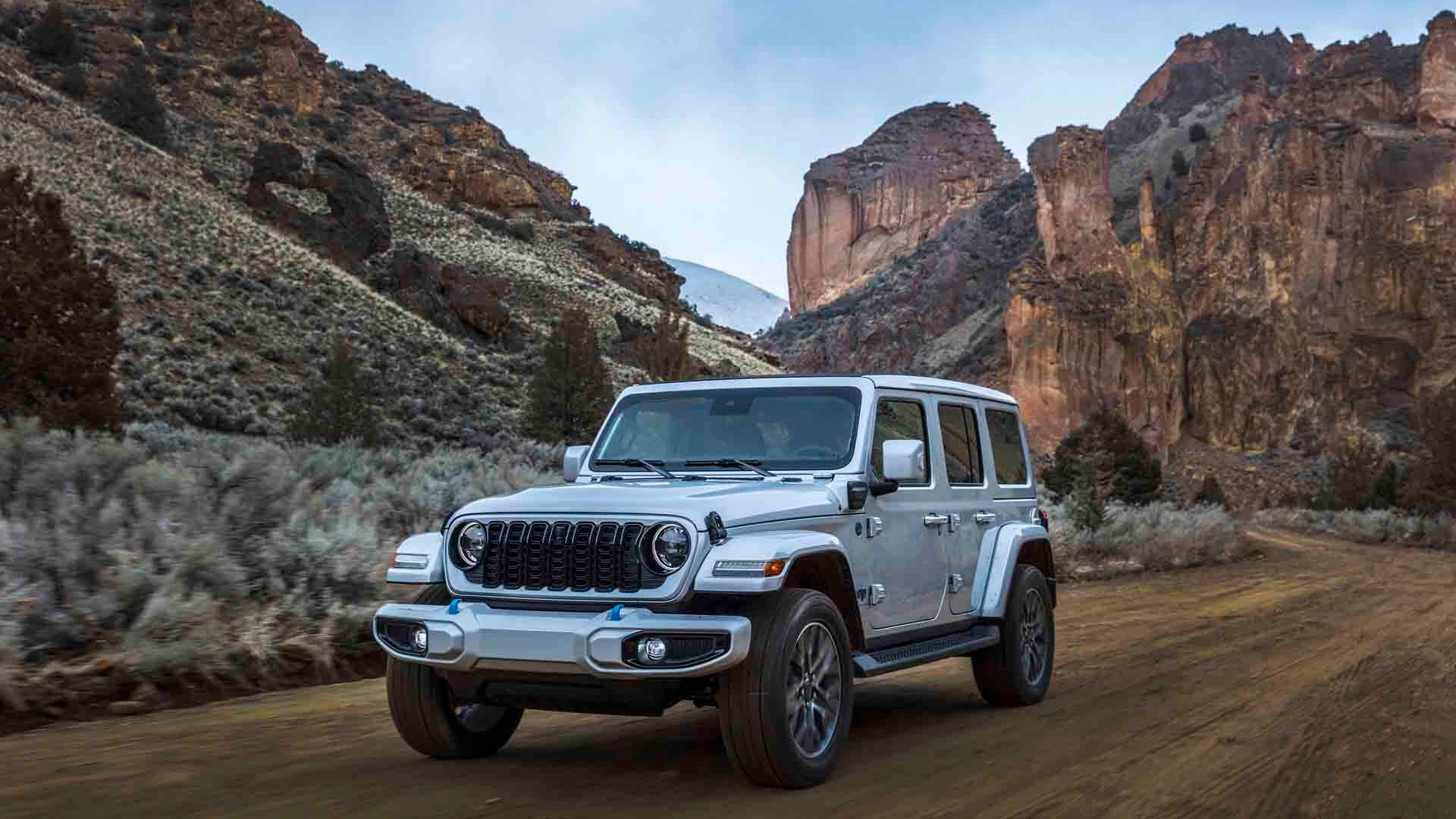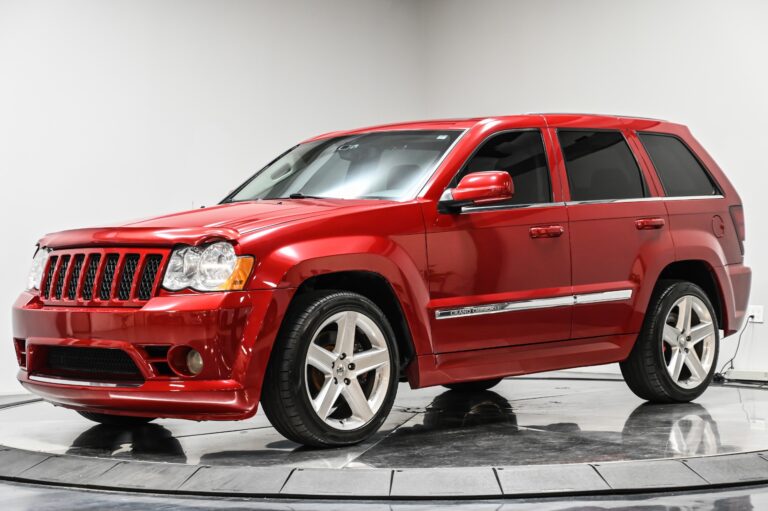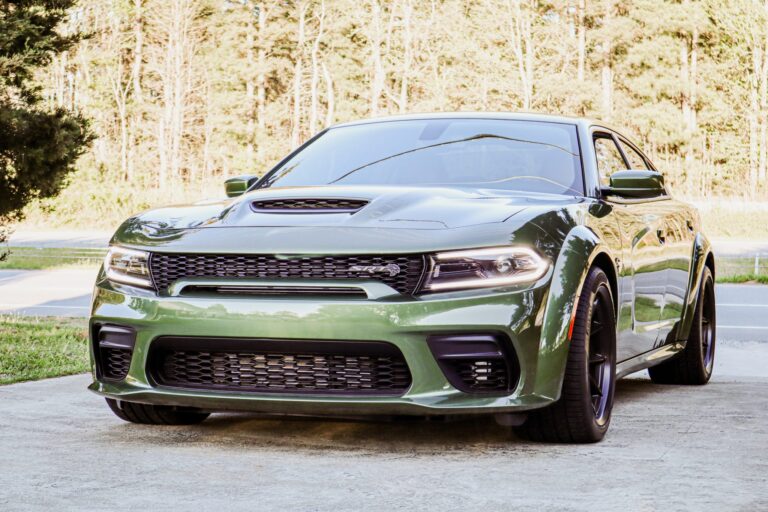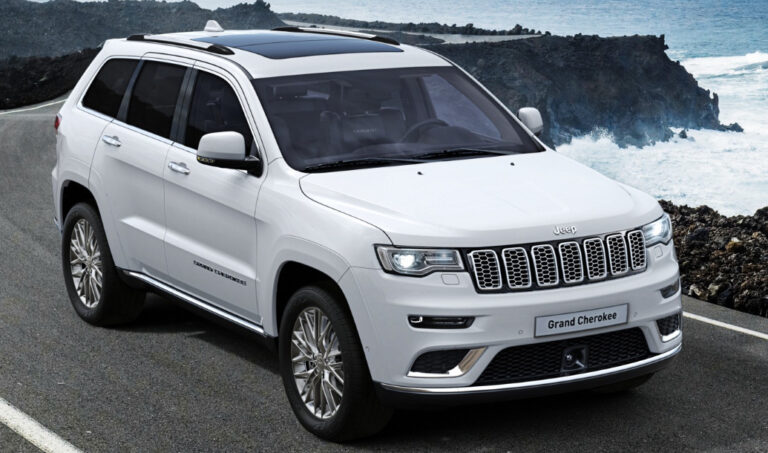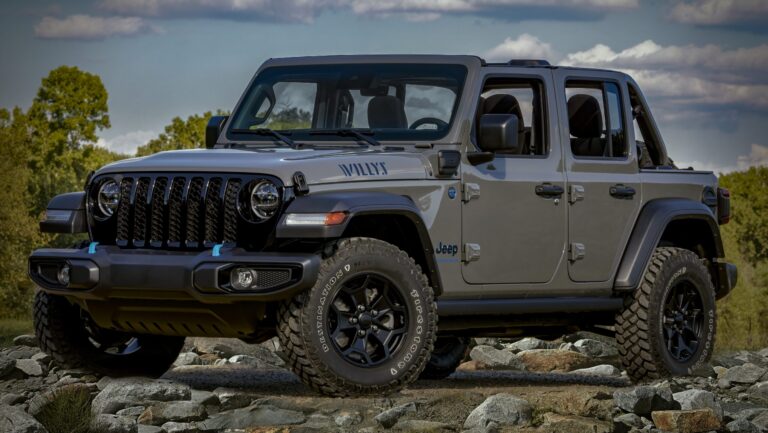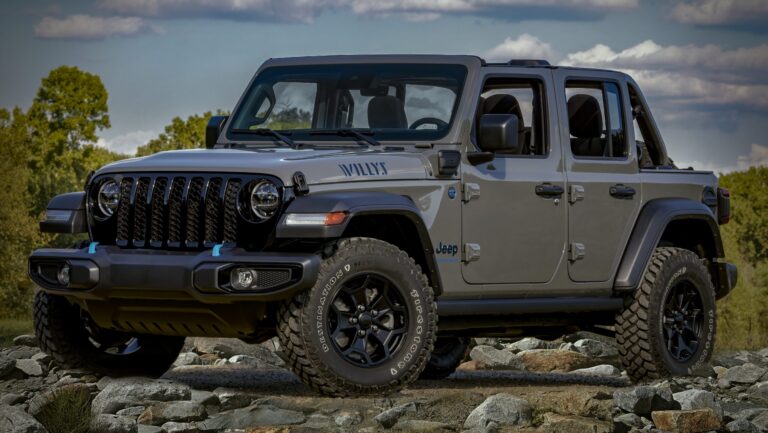The 2006 Jeep Wrangler: A Comprehensive Guide to an Enduring Icon
The 2006 Jeep Wrangler: A Comprehensive Guide to an Enduring Icon jeeps.truckstrend.com
The year 2006 holds a special place in the hearts of Jeep enthusiasts. It marked the final production year of the venerable TJ generation, a model widely regarded as the purest embodiment of the Wrangler’s spirit before its larger, more comfort-oriented successor, the JK, arrived. The 2006 Jeep Wrangler, or "Jeep Wrangler 06" as it’s often referred to, stands as a testament to rugged simplicity, unparalleled off-road capability, and a design ethos that prioritizes adventure over luxury. For many, it represents the sweet spot in Wrangler history: modern enough for daily usability, yet raw enough to connect driver and terrain in an unforgettable way. This comprehensive guide will delve into every aspect of the 2006 Wrangler, from its historical significance to practical ownership advice, helping you understand why this particular model continues to command a loyal following and strong demand in the used market.
Historical Context and Legacy: The Apex of the TJ Generation
The 2006 Jeep Wrangler: A Comprehensive Guide to an Enduring Icon
The Jeep Wrangler TJ, produced from 1997 to 2006, revolutionized the Wrangler lineage by introducing coil-spring suspension, vastly improving ride quality and articulation compared to its leaf-sprung YJ predecessor. Yet, it retained the classic round headlights, fold-down windshield, and removable doors that define the Wrangler experience. By 2006, the TJ had undergone years of refinement, reaching its peak in terms of mechanical reliability and off-road prowess.
The 2006 model year is particularly significant as it was the last chance to acquire a new TJ. It benefited from all the incremental improvements made over its production run, culminating in a highly capable and robust vehicle. Its relatively compact size, solid front and rear axles, and simple yet effective four-wheel-drive system cemented its reputation as one of the most capable stock off-road vehicles ever produced. This enduring legacy ensures that the 2006 Wrangler remains a highly sought-after classic, cherished by purists and off-road adventurers alike.
Key Features & Specifications: Understanding the 2006 Wrangler’s Core
The 2006 Jeep Wrangler offered a range of configurations and powertrains, catering to different needs and budgets.
Engine Options:
- 2.4L PowerTech I4: This four-cylinder engine, producing 147 horsepower and 165 lb-ft of torque, was the standard engine for the SE trim. It offered decent fuel economy for its class but was generally considered underpowered for serious off-roading or highway cruising, especially with larger tires.
- 4.0L PowerTech I6: The legendary inline-six, producing 190 horsepower and 235 lb-ft of torque, was the workhorse of the TJ lineup and is widely regarded as one of the most durable and reliable engines ever put in a Jeep. Its strong low-end torque made it ideal for off-road crawling and was the preferred choice for most enthusiasts.
![]()
Transmission Options:
- Manual: The 2.4L I4 was typically paired with a 5-speed manual transmission (NV1500). The 4.0L I6, from 2005-2006, received the NSG370 6-speed manual transmission, offering better gear spacing for both on-road efficiency and off-road control.
- Automatic: Both engines could be optioned with the 42RLE 4-speed automatic transmission. While convenient, some off-roaders prefer the direct control of a manual.

Drivetrain:
All 2006 Wranglers came standard with part-time 4×4.
- Transfer Cases: The standard transfer case was the NV231 Command-Trac (part-time, 2-speed with 2.72:1 low range). Rubicon models featured the NV241 Rock-Trac transfer case with a much lower 4.0:1 low range, providing superior torque multiplication for extreme crawling.
- Axles: All TJs came with solid front and rear axles. Dana 30 front and Dana 35 rear axles were standard on most trims. The Rubicon model was equipped with heavier-duty Dana 44 axles front and rear, along with air-actuated Tru-Lok locking differentials.
Suspension: The 2006 Wrangler featured a Quadra-Coil suspension system with coil springs at all four corners, a significant upgrade over previous leaf-spring designs, offering improved ride comfort and greater wheel articulation.
Trim Levels:
- SE: The base model, typically with the 2.4L engine, vinyl seats, and minimal amenities.
- Sport: A popular mid-range trim, usually equipped with the 4.0L engine, cloth seats, and optional features like air conditioning and cruise control.
- Sahara: The "luxury" trim, featuring unique fender flares, premium wheels, two-tone seats, and more standard comfort features.
- Rubicon: The ultimate factory off-roader, introduced in 2003. It came standard with the 4.0L engine, Dana 44 axles with lockers, the NV241 Rock-Trac transfer case (4.0:1 low range), larger tires, and a disengaging front sway bar for maximum articulation.
- Unlimited (LJ): A long-wheelbase version of the Sport or Rubicon (see next section).
- Golden Eagle: A special edition for 2006, based on the Sport or Unlimited, featuring unique decals, wheels, two-tone seats, and a hardtop.
The "Unlimited" Advantage: The Highly Coveted LJ
Perhaps the most significant development in the later TJ years was the introduction of the Wrangler Unlimited, affectionately known as the "LJ," in 2004. The 2006 model year was the last for this variant as well. The LJ featured a 10-inch longer wheelbase (from 93.4 inches to 103.4 inches) and an additional 13 inches of cargo space behind the rear seats.
Benefits of the LJ:
- Increased Cargo Room: A major advantage for overlanding, camping, or simply carrying more gear.
- Improved Rear Passenger Space: While still compact, the extra wheelbase made the rear seats more usable.
- Better Towing Capacity: Rated for 3,500 lbs, compared to the standard TJ’s 2,000 lbs.
- Smoother Ride: The longer wheelbase inherently provides a more stable and comfortable ride, especially on the highway.
- Enhanced Stability: The longer footprint can be beneficial for high-speed stability and climbing steep grades off-road.
The LJ, especially the Rubicon Unlimited, is highly sought after today due to its unique blend of TJ purity and enhanced practicality, making it a truly versatile and capable vehicle.
Off-Road Prowess: Why the TJ Shines
The 2006 Wrangler’s reputation as an off-road beast is well-earned, stemming from a combination of inherent design advantages:
- Compact Dimensions: Its short wheelbase (for the standard TJ) and minimal overhangs provide excellent approach, departure, and breakover angles, allowing it to navigate tight trails and steep obstacles with ease.
- Solid Axles: Both front and rear solid axles offer superior durability and articulation compared to independent suspension systems often found in modern SUVs, keeping tires in contact with the ground over uneven terrain.
- Robust Transfer Cases: The Command-Trac and especially the Rock-Trac transfer cases provide significant low-range gearing, allowing for precise control and ample torque for crawling.
- Body-on-Frame Construction: A sturdy and durable platform that can withstand the rigors of off-road abuse and is highly amenable to modifications.
- Vast Aftermarket Support: The TJ has one of the largest aftermarket ecosystems of any vehicle, allowing owners to customize and upgrade every aspect of their Jeep for specific off-road challenges.
For serious off-roaders, the Rubicon trim is the gold standard, offering factory lockers, Dana 44s, and the lower gearing of the Rock-Trac, making it incredibly capable right off the showroom floor.
Ownership Experience & Maintenance: Keeping Your TJ Running Strong
Owning a 2006 Jeep Wrangler is an experience unlike many modern vehicles. It’s more analog, more engaging, and often requires a bit more hands-on attention.
Common Issues and Quirks:
- Frame Rust: This is the most critical issue. Rust can severely compromise the frame’s integrity, especially in areas where salt is used on roads. Thorough inspection is crucial.
- Death Wobble: A violent, uncontrollable shaking of the front end, usually triggered by hitting a bump at speed. It’s typically caused by worn steering components (tie rod ends, ball joints, track bar, control arm bushings). It’s fixable but can be alarming.
- Oil Pump Drive Assembly (OPDA): Specific to 2005-2006 4.0L engines, the OPDA can wear out, leading to noisy operation and potential engine damage if not addressed.
- Check Engine Light (CEL): Often related to O2 sensors, catalytic converters, or minor vacuum leaks.
- Soft Top Leaks: Common with removable tops, requiring regular maintenance of seals.
- Worn Bushings/U-Joints: Due to their off-road nature, suspension and drivetrain components can wear faster than in a typical car.
Routine Maintenance Tips:
- Fluid Changes: Regular oil changes, transmission fluid, transfer case fluid, and differential fluid changes are paramount, especially if off-roading.
- Grease Points: Many suspension and steering components have grease fittings that need regular lubrication.
- Tire Rotations and Balance: Essential for tire longevity and preventing uneven wear.
- Steering Component Inspection: Regularly check for play in tie rods, ball joints, and the track bar to prevent death wobble.
- Rust Prevention: Wash the undercarriage regularly, especially after off-roading or driving in salty conditions. Consider applying rust inhibitors.
Modifications and Aftermarket Support: The TJ platform is a modder’s paradise. Lift kits, larger tires, winches, bumpers, armor, and engine performance upgrades are readily available. This allows owners to tailor their Wrangler precisely to their needs, whether it’s for rock crawling, overlanding, or daily driving.
Buying Guide for a Used 2006 Wrangler: What to Look For
Purchasing a used 2006 Wrangler requires diligence. These vehicles are often bought for specific purposes (off-roading, project builds), so their condition can vary wildly.
- Frame Inspection (CRITICAL): Get on your back and thoroughly inspect the frame rails, especially around the control arm mounts, skid plates, and suspension mounts. Look for excessive rust, rot, or shoddy repairs. Tap with a hammer; a dull thud indicates rust.
- Rust on Body and Fenders: Check rocker panels, door sills, and fender flares for bubbling or perforations.
- Engine Condition: Listen for unusual noises (knocks, ticks, squeals). Check for fluid leaks. On 2005-2006 4.0Ls, listen for OPDA ticking.
- Transmission & Transfer Case: Test drive to ensure smooth shifts (manual and auto). Engage 4WD high and low to confirm the transfer case works correctly.
- Steering & Suspension: Look for worn bushings, loose tie rod ends, and play in the steering. Drive over bumps to check for "death wobble."
- Fluid Leaks: Check under the vehicle for drips from the engine, transmission, differentials, or power steering.
- Electricals: Test all lights, wipers, power windows (if equipped), and HVAC controls.
- Previous Modifications: Assess the quality of any aftermarket parts. A poorly installed lift kit or mismatched components can lead to problems.
- Mileage: While lower mileage is generally better, a well-maintained high-mileage 4.0L can still be a good buy. Condition is more important than mileage alone.
- Pre-Purchase Inspection (PPI): Always have a trusted mechanic (preferably one familiar with Jeeps) perform a PPI. This small investment can save you thousands down the road.
Jeep Wrangler 06 Price Table (Used Market Estimates)
Please note that used vehicle prices are highly variable based on condition, mileage, trim level, modifications, regional demand, and current market trends. These are general estimates for a well-maintained 2006 model as of late 2023/early 2024.
| Trim Level | Original MSRP (Approx.) | Current Used Price Range (USD) | Key Features |
|---|---|---|---|
| SE | $17,500 – $19,000 | $6,000 – $10,000 | 2.4L I4 engine, 5-speed manual, Dana 30/35 axles, basic interior, often no AC. |
| Sport | $20,000 – $23,000 | $8,000 – $14,000 | 4.0L I6 engine, 6-speed manual or 4-speed auto, Dana 30/35 axles, more common options like AC, cruise control. |
| Sahara | $23,000 – $26,000 | $9,000 – $15,000 | Similar to Sport but with cosmetic upgrades (fender flares, premium wheels), better interior trim, often more standard features. |
| Rubicon | $27,000 – $30,000 | $15,000 – $25,000+ | 4.0L I6, Dana 44 front/rear axles with Tru-Lok lockers, 4.0:1 Rock-Trac transfer case, larger tires, quick-disconnect sway bar. Highly sought after. |
| Unlimited (LJ) | $23,000 – $26,000 | $10,000 – $18,000 | Long wheelbase, 4.0L I6, increased cargo space, higher towing capacity. |
| Unlimited Rubicon (LJ) | $30,000 – $33,000 | $20,000 – $35,000+ | Long wheelbase, all Rubicon features, highest demand and resale value. |
| Golden Eagle | $24,000 – $27,000 | $10,000 – $16,000 | Based on Sport/Unlimited, unique decals, two-tone seats, hardtop. Collectible. |
Note: Prices for highly modified or exceptionally low-mileage examples, especially Rubicon and Unlimited Rubicon models, can exceed the higher end of these ranges significantly.
Frequently Asked Questions (FAQ) about the 2006 Jeep Wrangler
Q1: Is the 2006 Jeep Wrangler reliable?
A1: Generally, yes, especially models with the 4.0L inline-six engine, which is known for its longevity. However, like any 18-year-old vehicle, regular maintenance is key, and some common issues (like rust and worn steering components) need to be addressed.
Q2: What’s the difference between a TJ and an LJ?
A2: Both are part of the TJ generation (1997-2006). The "TJ" refers to the standard-wheelbase Wrangler, while "LJ" (Unlimited) refers to the longer-wheelbase version (10 inches longer), offering more cargo space and a slightly smoother ride.
Q3: Which engine is better, the 2.4L or 4.0L?
A3: For most purposes, especially off-roading or if you plan on larger tires, the 4.0L inline-six is highly preferred due to its superior torque, reliability, and widespread aftermarket support. The 2.4L is adequate for lighter use but can feel underpowered.
Q4: What are the most common rust spots to check?
A4: The frame is the biggest concern, particularly around the skid plates, control arm mounts, and rear sections. Also check rocker panels, floorboards, and behind the fender flares.
Q5: What is "death wobble" and how do I fix it?
A5: Death wobble is a violent oscillation of the front wheels, usually triggered by hitting a bump at speed. It’s caused by worn or loose steering and suspension components (e.g., track bar, tie rod ends, ball joints, control arm bushings). Fixing it involves identifying and replacing the worn parts, often starting with the track bar.
Q6: Can a 2006 Wrangler be a daily driver?
A6: Yes, many people daily drive TJs. However, expect a less refined ride, more road noise, and lower fuel economy compared to modern SUVs. They are more basic and less comfortable on long highway trips but perfectly capable for daily commutes, especially if well-maintained.
Conclusion: The Enduring Appeal of the 2006 Jeep Wrangler
The 2006 Jeep Wrangler stands as a monument to functional design and adventurous spirit. As the final iteration of the beloved TJ generation, it encapsulates a perfect balance of traditional Jeep ruggedness with modern (for its time) coil-spring comfort. Whether you’re seeking a capable off-road machine, a unique classic vehicle, or a customizable platform for your automotive dreams, the 2006 Wrangler offers an unparalleled experience. Its enduring popularity and strong resale value are a testament to its timeless appeal and inherent capabilities. For those willing to embrace its quirks and commit to proper maintenance, the 2006 Wrangler promises countless adventures and a true connection to the legendary Jeep lineage. It’s more than just a vehicle; it’s a lifestyle, a community, and a piece of automotive history that continues to inspire and excite.
